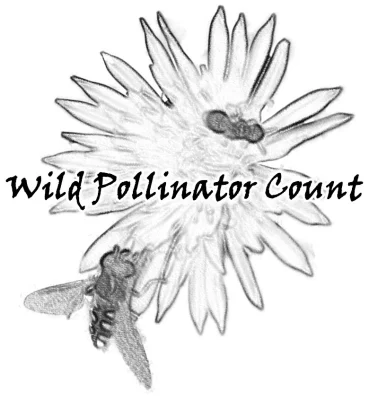Ever wondered what pollinators visit your favourite flowers? Take 10 minutes, sometime in our count weeks, to watch flowers in your garden or local park and take note of what you see! Then enter what you’ve seen into our database. We’ve also made a handy Wild Pollinator Count Tally Sheet to print out and use to record your observations in the garden.
If you have photographs of insects visiting flowers outside our count periods, you may like to add them to our iNaturalist project.
If you’d like some help with identifying the insects you see, visit the Resources and Identification Tips pages. And if you’re not sure what type of pollinator you’ve seen, you can note that when you submit your observation. Also have a look at our Frequently Asked Questions page.
- During the observation week, choose any day that is sunny, warm and calm. These weather conditions are important, as many insects don’t like flying when it’s cold, raining or very windy. If there is a shower of rain, wait at least an hour and for the sun to come out before doing your observation. Some pollinators don’t fly in strong winds, so make sure it is calm or only lightly breezy when you perform your observation.
- Find a flowering plant or tree in your garden, or in a local park. You need to tell us what the plant is, so make sure you know the common or scientific name. Choose a single large flower, or a group of smaller flowers within your visible range (see Counting FAQ).
- Watch the flowers continuously for 10 minutes. Record any insect that visits the flowers and moves around on the stamens or pistil (the flower’s reproductive parts). Don’t record anything that just flies past without touching the flower. If you can, try not to count the same individual insect twice.
- Enter your observations on the Submit Observations page. You can record multiple separate observations – try watching different flowers at different times of the day. If you do multiple observations, make sure to enter each as a separate submission.
- Please make sure to enter exact numbers in each box on the submission form – entering estimates like ‘more than 10’ will not be useful for the data set. If you didn’t see any pollinators at all, you can still submit your observations as ‘0’ – these observations are just as helpful!
- We encourage you to try multiple counts in different locations, or on different flowers. Some flowers are more attractive to pollinators than others, so you might see some interesting patterns!
Note: Photos are not necessary to submit an observation, but you can email us some if you choose.
Thank you for contributing to wild pollinator conservation in Australia!
